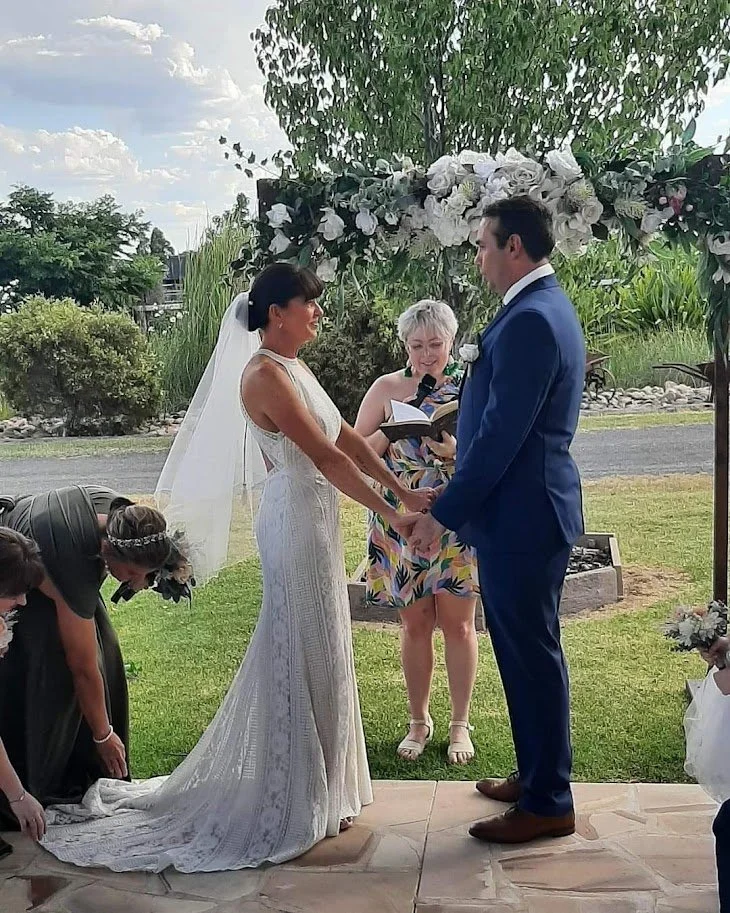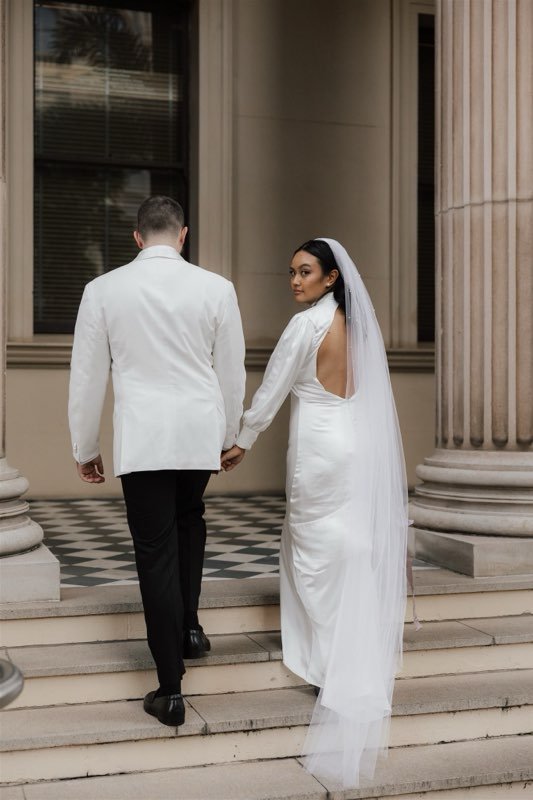How to Match Your Veil to Your Wedding Dress Style
Choosing a veil isn’t just about length
it’s about balance, personal taste, and letting your dress still take centre stage.
When you’ve found the dress, the next step is finding a veil that complements it perfectly rather than competes with it. The right veil enhances your look, ties in your style, and adds that final detail to perfect your elegance.
But how do you know which veil pairs best with your gown?
Let’s walk through it.
1. Start with Your Dress Silhouette
Your gown’s shape sets the tone. A long cathedral veil suits the drama and length of a ballgown but may overpower a slim-line crepe dress.
Here are some examples:
Ballgown or A-line:
Try cathedral or chapel-length veils for grandeur.
Fit-and-flare or mermaid:
Fingertip or waltz-length veils keeps the silhouette in focus. Although depending on the length, you can also choose cathedral length. You want the veil to be approximately 2 inches longer than your train.
Real Bride Tash Gotz
Photographer: Jessica Turich
Another option, if you have a narrow style silhouette is to choose a half width veil.
Real Bride: Jodie Young
Tea-length or short dresses:
Consider a shoulder-length, elbow-length or even finger-tip length veil.
2. Match the Fabric and Texture
A crisp tulle veil can clash with a floaty chiffon dress — but it can look stunning with structured satin.
Tips:
Choose a soft drape veil for slinky or boho dresses.
Match sheerness or opacity — if your dress is light and airy, your veil should be too.
Avoid mixing a heavy lace veil with a heavily beaded gown (unless you want a bold look).
Real Bride: Jacey Washington
Photographer: @katiefrithphotography
3. Echo or Complement the Details
If your gown features lace, pearls, or beading, your veil can pick up these elements — subtly.
Ideas:
A scattered pearl veil can echo pearl buttons or accessories.
A lace-edged veil can mirror lace appliqué on your bodice.
If your dress is plain, your veil can carry the statement — like a mantilla veil or beaded edge.
Real Bride Hayleigh Hess
Photographer: Chelsea J Photography
4. Consider the Train (or Lack Of)
Your veil should never compete with your train — it should flow with it.
Guide:
No train or short train: Longer veils add drama and act as a train alternative.
Long train: A sheer, cathedral-length veil that extends just beyond the train creates layered elegance.
Statement train: Choose a fingertip or waist-length veil that doesn’t hide your gown’s best feature.
Real Bride Leanne White trying on our Mantilla Lace Veil
5. Think About the Back of Your Dress
Backless? Keyhole? Low scoop? Let the dress be seen.
Use a sheer veil or one that parts in the middle.
Or go short — shoulder, elbow, or even a bow or wings for a modern twist.
Real Bride Nancy McKelvey
6. Finally — What Feels Like You
Forget rules. If your dream veil doesn’t ‘match’ but makes you feel amazing! Then go for it.
Some brides wear long dramatic veils with minimalist gowns. Others skip veils entirely in favour of bows, hats, wings, or floral headpieces. The key is feeling authentically you.
Need Help Choosing or Styling Your Veil?
At Rachel’s Custom Sewing, we help brides every week choose or customize veils that match their dress and their personality. You can bring your dress in for a fitting to explore our curated range. Everything from plain to including pearls, crystals, mantilla edges, and one-of-a-kind details.
Want to see examples? Browse our Veil Style Guide page
Or send us a message!
Also follow us on Instagram @customsewing.au for real brides, behind-the-scenes looks, and all our different veil style combinations.









